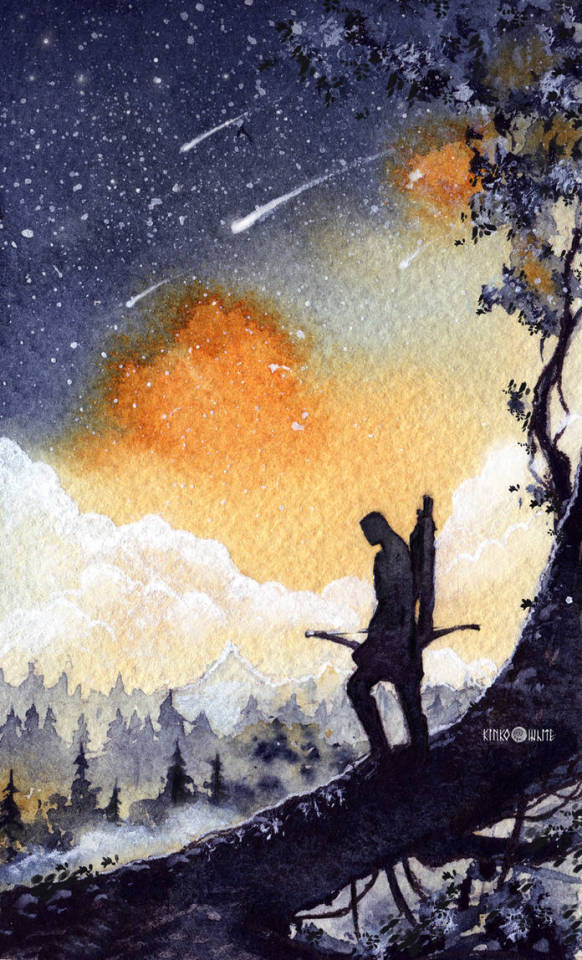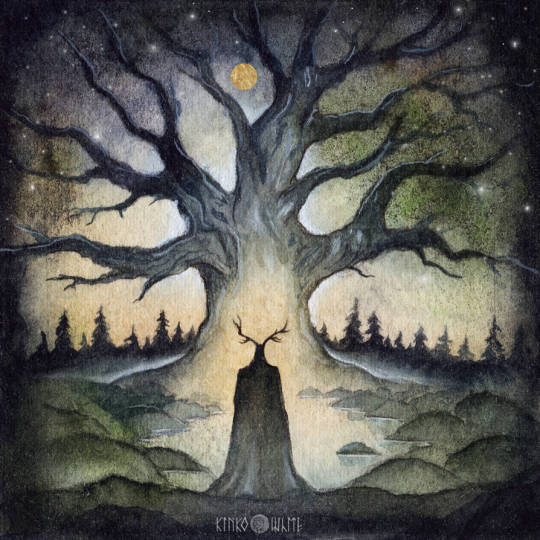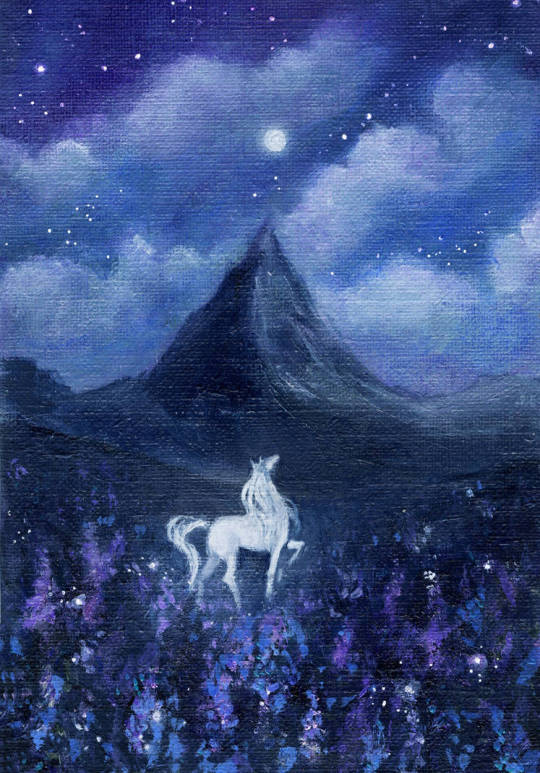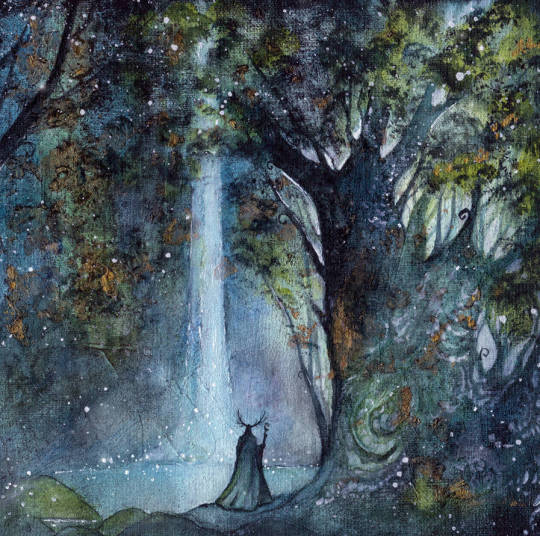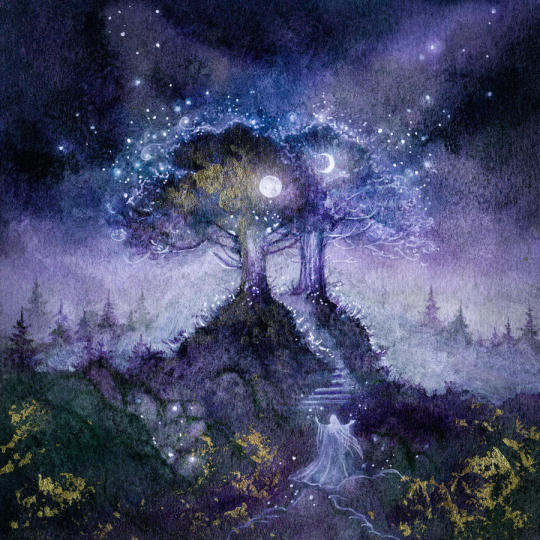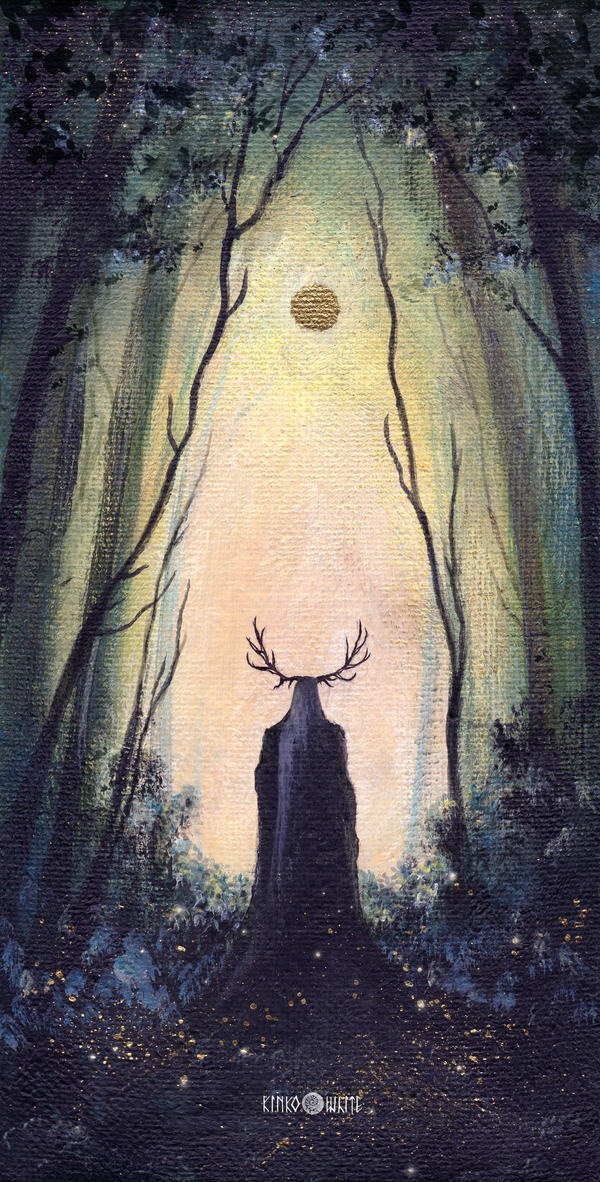#kinko white
Text

Fog Spirits dancing in the Moonlight by Kinko White
5K notes
·
View notes
Text

Akerius | Shadowed Paths Through Middle-Earth (2020)
4 notes
·
View notes
Text
one of the most hilariously unrealistic things about supernatural isn't the demons or the angels or the monsters it's the fact that everyone believes sam and dean are fbi when they walk up in beat up flannel sam's shoulder length hair
#they flash their little kinkos printed fbi badge and just get in everywhere HOW#white men are exhausting 🙄#ana's spn rewatch
22 notes
·
View notes
Photo
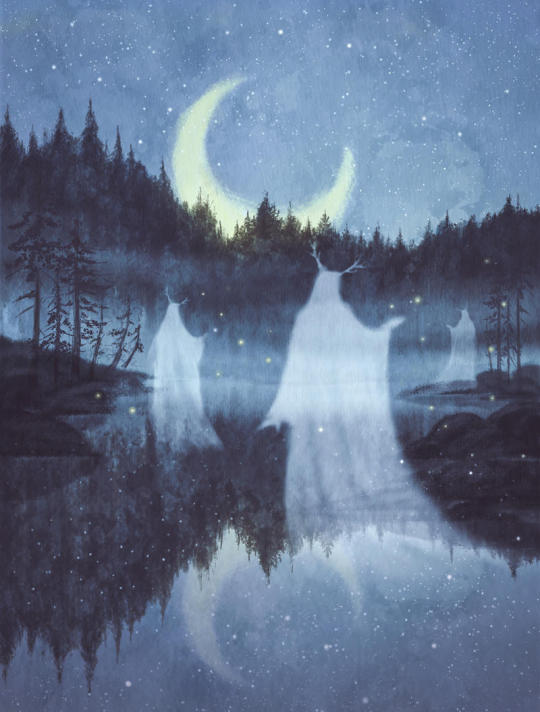
The Dancing Fog Spirits by Kinko-White
This artist on Instagram
3K notes
·
View notes
Text

Ibusuki no Tamatebako (or nicknamed Ibutama)
Some facts about this train below!

Ibusuki no Tamatebako! Its a diesel powered sightseeing train that runs in southernmost Japan! It goes between 2 stations, Kagoshima-Chūō Station and Ibusuki Station. Originally it was made up of 2 KiHa 47 cars (2 car train!) but since then has a third car has been added (but only added on busy days such as holidays and weekends). The train is painted in a way where the black side faces landward and the white side faces seaward.
The Train's theme is based off the story of Urashima Taro! If you aren't familiar with the story, the gist of it is that a fisherman saves a sea turtle that turns out to be a Princess of the Dragon King. As a reward he is brought to a palace under the sea where he stays for a couple of days. When asked to be returned home he receives a box called the Tamatebako, and is warned to never open it. When the fisherman returns to the surface he discovers that hundreds of years has passed, and not heeding the warning, he proceeds to open the box where a puff of smoke comes out and he instantly turns into an old man.
Thats where the Tamatebako part of its name comes from! Its also why the train is decorated in box imagery (Tamatebako roughly translates to "jewel box") Also when the doors open, the train shoots off a puff of white smoke to emulate the puff of smoke in the story!
The train ride is about 50 minutes, due to irregularities in the track its a bit of a bumpy ride. In the second car there are seats facing the windows so you can get a view of Kinko Bay.
Yup yup!
#my art#fanart#submas#I wanted to show off a cool train#trains#that happened to have a black and white color scheme haha
896 notes
·
View notes
Text
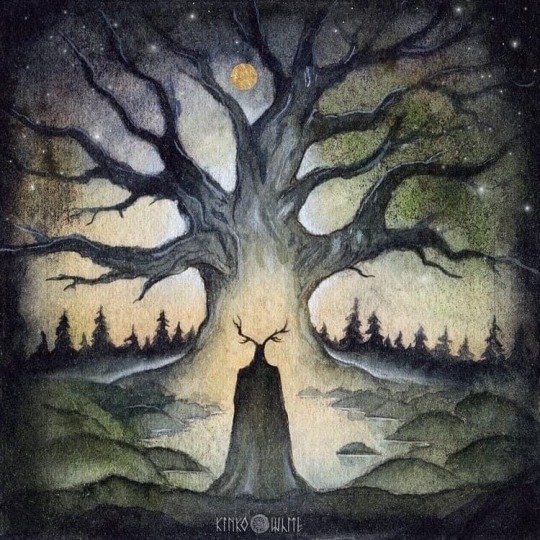
Blessed Moon
Art Credit: The Forest King Kinko-White deviantart
#full moon#moon magick#witchcraft#male witch#horned god#green witch#nature witch#witchy#witchythings#magick#paganism#pagan community#pagan witch
496 notes
·
View notes
Text
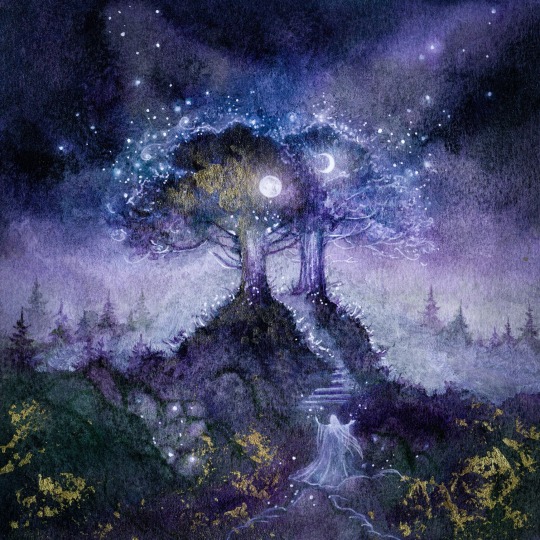
The two trees of Valinor - by Kinko-White
#Lord of the rings#The hobbit#Silmarillion#Trees of valinor#Valinor#First age#Feanor#Morgoth#Maglor#Maedhros#Celegorm#Silpion#Laurenil#j r r tolkien#Tolkien#ungoliant#Telperion#Valar
395 notes
·
View notes
Text

Elven King by Kinko White
400 notes
·
View notes
Text
Our true feelings about race and identity are revealed in six words
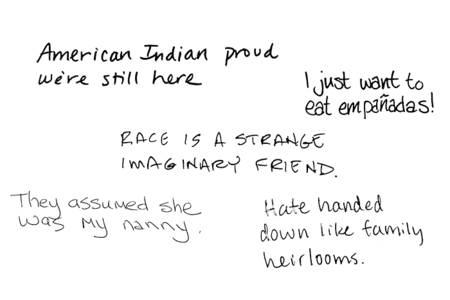
This is a poignant article about a project that Michele Norris started that tapped into people's thoughts about race in a profound way--using only six words. This is a gift🎁link, so anyone can read the full interactive article, even if they don't subscribe to The Washington Post. Below are some excerpts from the article:
I have always cringed when the accusations fly about someone allegedly “playing the race card.” It’s usually a proxy for “You’re making me uncomfortable, so please stop talking.” Or a diversionary tactic used to avoid having to speak about race with any kind of precision or specificity. A shorthand for “Just shut up.” And so, in 2010, I flipped the script, turning that accusatory phrase into a prompt to spark conversation. I printed 200 black postcards at my local FedEx Kinko’s on upper Wisconsin Avenue asking people to condense their thoughts on race or cultural identity into one sentence of six words. The front of the cards simply read:
Race. Your thoughts. 6 words. Please send.
I left the cards everywhere I traveled: in bookstores, in restaurants, at the information kiosks in airports, on the writing desks at all my hotels. Sometimes I snuck them inside airline in-flight magazines or left them at the sugar station at Starbucks. I hoped a few of those postcards would come back, thinking it would be worth the trouble if even a dozen people responded.
Much to my surprise, strangers who stumbled on the cards would follow the instructions and use postage stamps to mail their six-word stories back to me in D.C. Since my parents were both postal workers, this gave me an extra thrill. Here I was, doing my part to support the Postal Service. Who says snail mail is dead?
Half a dozen cards arrived within a week, then 12, then 20. Over time, that trickle became a tide. I have received more than 500,000 of these stories — and more arrive every day, though the vast majority of submissions now arrive through a website portal online. They have come from all 50 states and more than 100 countries.
Though limited to six words, the stories are often shocking in their candor and intimacy. They reveal fear, disappointment, regret and resentment. Some are kissed by grace or triumph. A surprising number arrive in the form of a question, which suggests that many people hunger not just for answers but for permission to speak their truths. It was amazing what people could pack into such a small package:
Reason I ended a sweet relationship
Too Black for Black men’s love
Urban living has made me racist
Took 21 years to be Latina
Was considered White until after 9/11
Gay, but at least I’m White
I’m only Asian when it’s convenient
To keep the conversation going, I created a complementary website for the Race Card Project, where people could submit their six-word stories online. Over time we added two words to the submission form: “Anything else?” That changed everything. People sent in poems, essays, memos and historical documents to explain why they chose their six words. The archive came alive. It became an international forum where people could share their own stories but also learn much about life, as if it were lived by someone else.
I highly recommend reading the entire article, using the above gift link. As an olive-skinned Italian American, with curly hair, I have often felt like I am a walking Rorschach test for race. Even though I'm classified as "white" in the U.S., I've had people ask me if I'm a Latina, a Native American, Black, Egyptian, Jewish, and even a South Pacific Islander. Given my history, here are my six words on race.
A book is not it's cover.
I welcome people adding to this post their own 6 words on race.
#race#six words#feelings about race and identity#martin luther king day#michele norris#the washington post#gift link
38 notes
·
View notes
Text
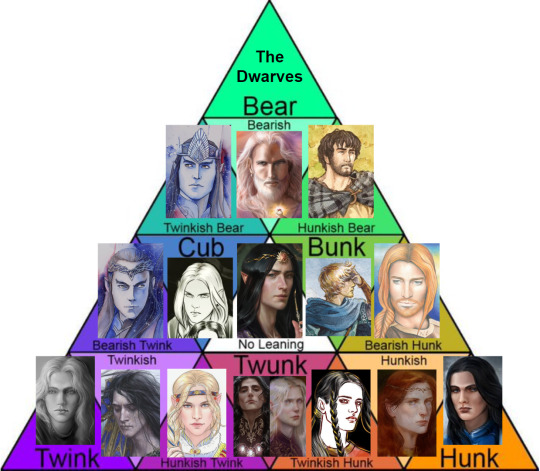
Credits to: lorica-art, Elena Kukunova, Bella Bergolts, alystrea, Kinko-White, & Serwen-101
#the silmarillion#elros#cirdan#beren#elrond#eol#eol the dark elf#finwe#tuor#mahtan#finarfin#maglor#finrod#feanor#celegorm#fingon#maedhros#fingolfin
34 notes
·
View notes
Text

Fox Lore 🦊
All around the earth, there are stories of tricksters, messengers, and guides.
The fox is one of those creatures that are quite custom to Japanese (Yōkai kitsune), Chinese (Huli jing), Vietnamese (Ho Tinh) and Korean (Kumiho) folklore…as servants of the gods and as omens of death and destruction.
In early Mesopotamian mythology, the fox is one of the sacred animals of the goddess Ninhursag. The fox acts as her messenger.
This is similar to Shinto mythology, the foxes are the divine messengers of the Kami spirit Inari (specifically-Ukanomitama-no-Kami and the Inari Gods (Fushimi Inari).
In Japanese kitsune mythology, foxes are gifted with an ability called: kitsunebi (Fox Fire).
Kitsune refers to both real foxes and fox spirits, or rather every fox can become a fox spirit, and they can have many powers.
Kitsunebi refers to a phenomenon of strange glowing orbs that appear in a row which are thought to be little balls of fire breathed out by kitsune, or foxes, to light their way. If there are many lights in one area, it is said that there is a fox wedding taking place.
Kitsune also possess another quality commonly associated with foxes - shapeshifting and mental manipulation. In most lore involving foxes shapeshifting, the fox will transform into a beautiful young woman who seduces men, but they can sometimes be dangerous: like Tamamo-no-Mae.
Kitsune shapeshifters are not always seen as malicious however, the Inari Foxes and Byakko are seen as good foxes that will help, guide, lead, live with humans, possess humans to help them and serve as messengers of the Inari Goddess, Ukanonitama.
In fact, there are actually 7 Kitsunes in Japanese Lore:
(1) One of the well know Kitsune’s is Byakko 白狐(Reiko 霊狐) is a white furred vulpine spirit that is mostly benevolent. In Japanese mythology, the legend tells of the Seimei Abeno’s (安倍 晴明) mother Kuzunoha (葛の葉) who was, in fact, a Byakko that transformed into a women. This gave Abe great abilities in divinity.
In Shinto, the Torai people of the Korean Peninsula believe their goddess, who protected foxes, would later evolved into becoming Ukanomitama, the chief deity of Inari who settled on the ‘Fox Mount’ (Near Kyoto), also called Byakko.
Most of the high noble foxes of Ukanomitama are called: Myōbu. Japanese folklore contains several stories that suggest explanations for the connection, mainly involving Fushimi Inari-taisha on Mount Inari near Kyoto City.
On this sacred ‘spirit’ mountain are a vast number of Inari shrines, most of which are devoted to the Inari Cult and the 5 Inari Gods, but some are also devoted to other deities and ascended humans, including a fox deity named Myōbu.
Fushimi Inari-taisha itself contains a number smaller shrines dedicated to foxes, including the Byakko-sha (white fox shrine) and the Myōbu-sha (court lady shrine). The fox messengers of Inari Ōkami are also called Byakko, Myōbu, and Inari Foxes.
The Hindu-Buddhist influenced introduced the Great White Fox who brought the goddess Dakiniten [荼枳尼天] to Japan. It is believed that the legend of Dakiniten began the ‘human-fox’ hybrid appearance of divine foxes as it is said Dakiniten and Inari had a human/fox-form.
There are also 2 sub-types of Byakko: the Shikigami Izuna [飯綱] and the Kudagitsune [管狐].
(2) the Yako [野狐] are one of the most depicted in animes and arts—wild foxes.
They are usually depicted with a leaf on their forehead. Unlike the divine Byakko, Yako still possesses their physical state and are often delinquents with their sole concerns of how to use their shape shifting ability is to trick or frighten naive human only for their self-gratification, instead of helping them.
Yako are never worshipped in any form, and are not Inari Foxes. In fact, many Inari Foxes are tasked in hunting for Yako Foxes to bring back into the fold.
Most Yako seem to live in the Kingdom of Izumino (Osaka, Japan); nearby to the old Capitol city of Kyoto where the Byakko live.
(3) the Kinko [金狐] & Ginko [銀狐] are the incarnations of Yin-Yang dualism, Kinko & Ginko are two in one as an unity.
While Kinko is the manifestation of Yin representing the Sun, Ginko, on the other hand, is the manifestation of Yang representing the Moon.
Not a whole lot are known about them in detail, Japanese Folklorist Kunio Yanagita (柳田 國男) classifies them under the term ‘Zenko’ (善狐), a classification of Byakko spirit.
The statues of Kinko’s holds a key in its mouth and are worshipped for financial wealth; the Ginko’s statue holds a scroll in its mouth and is worshipped for academic success.
(4) the Kurogitsune (黒狐) or also called a Genko (玄狐) is a black furred fox that incarnated into a Big Dipper. These foxes are also Inari Foxes.
Before becoming a manifestation of a constellation, Genko was an ordinary black fox that served under the Shinto agricultural deity Ukanomitama as it migrated to Northern Japan.
The Genko lead Fox was sent to guard Princess Hatsuhime, who lived in the North. When she died of illness; the Genko remained in the north with his family.
(5) one of the most powerful and dangerous kitsunes’s is Kyubiko [九尾狐] or also spelled Kyubi-no-kitsune [九尾の狐]. They are white furred vulpine spirits with 9 tails.
In fact, many Asian mythologies include many-tailed (1-9 tails), shapeshifting foxes.
Typically, such fox spirits gain a new tail, and increase their power, every 100 years until they reach the full nine. Only the ninth tail can be given by the gods (as in Japanese mythology). Thus, the number of tails is an easy shorthand for how old and powerful an Asian fox spirit truly is.
One of the most powerful Kyobiko Foxes greatly influenced the Yin Empire by transforming into a princess named Dájǐ (妲己). When they discovered what she was, Warlord Wǔ Wáng [武王] murdered her, bringing and end to the Yin Empire.
Being a powerful kitsune, though her body was destroyed; her spirit transformed into Lady Tamamonomae [玉藻前], the high concubine of Emperor Toba [鳥羽天皇] during the Heian Era. Lady Tamamonomae was first featured in classic Japanese literature as a supernatural character who got executed by soldiers after they uncovered her being a Kyubiko in "Tamamonomae-monogatari" [玉藻前物語] written during the Kamakura Era.
There, Tamamonomae became the Killing Stone of Nasu, her spirit entrapped and destined to one day be freed when the world was on the brink of chaos. In 2021; the Killing Stone split in two, releasing Tamamonomae.
There is a 8 tailed variant of Kyubiko called a Yaonokitsune. The Yaonokitsune is a kitsune that was forgotten until a story regarding the Fox was discovered in 2015, in Kyoto.
In the story, Yaonokitsune appeared in General Iemitsu Tokugawa’s [徳川 家光] (1623-1651) dream on his sickbed, and prophesized that his illness would soon be cured. His health was improved after possession and the Fox then departed back to Inari.
(6) The Kuko [空狐] is one of the oldest Kitsune’s and can be considered divine or godly.
Kukos are millennium old, non-physical entities comprised solely of pure divine energy. More specifically, they possess an immense parapsychological power such as telepathy, prophecy, and remote viewing.
One story of a story of a Kuko involved a man named Genjiro Nagasaki [長崎 源次郎] who was possess by a Kuko that lost its carnal body after being killed by a dog when traveling from Western Japan to Edo City.
Kuko, not only cured Genjiro's neurosis, but also gave him divine knowledge on historical battles during the Sengoku Period. Before its departure, Kuko explained to Genjiro that it decided to possess him because he was a righteous man and also left a signature together with this story by calling itself "Tenbi" [天日] as an alias.
(7) Lastly, we have the Tenko [天狐] that is identical to the Kuko Kitsune.
Tenko are divine, non-physical vulpine spirit that is over a millennium years old. In the Chinese scripture "Genchu-ki", a vulpine spirit that ascended to the Heavens after absorbing enough ‘ki’ from beautiful, young women for a millennium would turn into a Tenko.
However, in Japanese scriptures, Tenkos are often related to animals, other than foxes, as it’s name implies.
In the Japanese Mikkyo [密教] division of Shingon Buddhism [真言宗]: Tenko refers to a hawk, whereas Chiko [地狐] referring to a dog, despite of having the kanji character for "fox" (狐) in their name.
On Ojika Island, located just off the western coast from Nagasaki Prefecture, is a mythological entity called Tenkoo [テンコー] which is believed to possess people; granting them with prophetic abilities. Biology Historian Teiri Nakamura [中村 偵里] commented on Tenko stating that it could also be synonymous to Ryujin [龍神] (a Dragon Deity) from how Tenko is occasionally referred to as ‘Shinko’ [辰狐] (which, is also an alternative name for Dakiniten, the Fox goddess).
In Korean mythology, the dangerous Fox is the Kumiho; though there is also a lesser known fox spirit named Cheonho, which is a divine animal spirit that supposedly protects kings.
The Cheonho has golden fur and possess the gift of clairvoyance. It to can split it’s one tail into nine pieces (instead of nine tails).
In Chinese mythology, there is the Huli jing can be either a good or a evil spirit. Like the kitsune and the kumiho, huli jings are shapeshifters, and often assume the forms of beautiful young women.
The Chinese believed that they were entirely made up of feminine energy (yin or jing) and needed to gather masculine energy (yang) to survive. This leads to acts of seduction and possession.
The Moche people of Peru once worshiped animals and often depicted the fox in their art who was a warrior who used mental attacks in warfare.
In Greek mythology, Teumessian fox always evaded its hunter. According to the myth, it was sent by a god, possibly Dionysus, to punish the city of Thebes for a crime the people had committed.
Since Thebes was under the protection of Zeus, he sent the foxes mortal enemy: a dog named Laelaps who continues to hunt Teumessian in the constellations.
In the Celtic realm, as the Celts and Scots believed the fox was to be a guide, and was honored for its infinite wisdom. The Celts understood that the fox knows the woods intimately, and they would rely upon the fox as their guide in the spirit world.
In Ireland, there is an old Irish superstition warns men about meeting a red-haired woman early in the morning for she might be a fox in disguise.
In Finnish mythology, the Fox is also depicted as a cunning trickster, but is seldom evil.
In Northern Finland, the Fox takes to the heavens to conjure the ‘revontulet’ which translates into ‘Fox Fires’.
The fox is said to conjure the aurora borealis while it runs through the snowy hills of Finland. When the fox’s fur touches the snow, it creates mystical sparks that sets the sky ablaze.
In Germany & France, there is Reynard the Fox. Reynard is an anthropomorphic Fox the is a trickster.
He's well enough known in France that the entire Fox species was renamed after him
From Bulgaria and Russia, there is the myth of Kuma Lisa, a female fox who is a cleaver trickster.
Kuma Lisa encountered Kumcho Vulcho, a wolf, who suffered from her tricks and games.
In North America, Native American mythology has two interpretations for the fox: (Northern tribes) observes the fox as a wise and noble messenger. (Plains tribes) views the fox as a trickster playing pranks, or worse luring one to demise. Similar to Coyote in the Pacific Northwest Coast.
In an Apache myth, people were given fire by Fox.
As the story goes, the Fox decided to steal fire from the fireflies to help warm up the world. He learned how to fly from geese to go to where the fireflies lived and kept fire to themselves.
Lighting a piece of cedar attached to his tail, he managed to run off with sparks flying everywhere, and eventually, fire reached the people.
In Inuit Mythology; they believe the Fox can speak and are believed to be able to remove their fur and become a human woman.
These female shapeshifters like to play tricks on humans and to live with humans.
Like the Selkie, if their skin is taken, they will be unable to transform back into their Fox form.
In the Dogon mythology of Africa; the Pale Fox is a trickster god of the open desert. It is the embodiment of chaos; but also the messenger of the gods (similar to Japanese Inari Foxes, and the Mesopotamian goddess Ninhursag foxes).
In Tswana, there is a riddle that goes:
"Phokoje go tsela o dithetsenya”
Meaning: Only the muddy fox lives. It is similar to the philosophical sense that only an active person who does not mind getting muddy, gets to progress in life.
Honorable Bad Foxes:
Dogon Trickster God - Pale Fox
India/China/Japan Nine Tail Fox - Tamamo-no-Mae
Vietnam Hanoi Fox - Hồ tinh
333 notes
·
View notes
Note
For the ask game:
21, 21, 30...?
Thank you!!
21. Art styles nothing like your own but you like anyways
SO MANY OMG I love all kinds of artists. It is, however, extremely difficult to remember names when put on the spot 😭
General artists, some famous and some not:
Pascal Campion, I just love the simplicity
@eor.glass.studio on insta, they make lovely Brittany inspired art
@ateliermateocremades on insta, they're a small account but I'm in complete awe (not painting, they make cut parchment lute rosettes)
Tolkien artists:
@kinko-white
@silmaspens
@goldfarthing
honestly so many, everything I reblog is something I love, and most of them are very different from mine.
30. What piece of yours do you think is underrated
A lot of my Disabled Tolkien characters series tbh, maybe in particular the EDS Gang comic.
Ask me questions about my art!
11 notes
·
View notes



